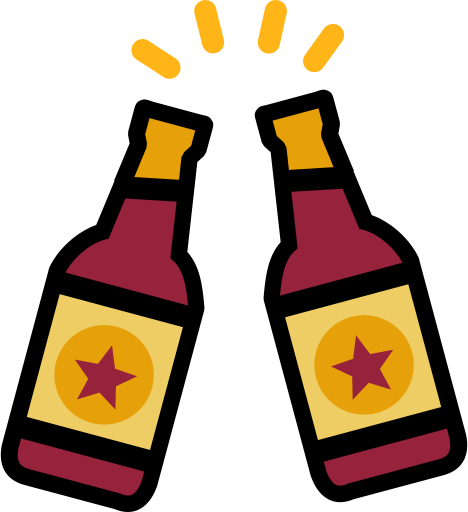Happy days! My new beer is done. This is a battle-tested recipe with lemons and ginger. This time I also had 10 g of fresh lemon balm in the seasoning infusion. This guy:

Works really great as a beer component, sharing to spotlight this herb with you all! There’s a Wikipedia page that describes the many aromatic compounds it imparts. It’s perennial (pic is from my garden), grows in a slightly invasive manner so you only need to plant very little to get enough for many brews. This was a warning :)
Another new twist was a helping of Weyermann spelt wheat malt. I expected the nutty spelt flavour from it, but the taste profile ended up so multi-faceted that I’ll need more tastings to pinpoint it :D All in all, a distinctive flavour to this beer. Fermented to bone dry very smoothly.
Great idea! We’re overrun with Lemon Balm!
How did you extract the flavour? Did you add it to the boil or make a vodka tincture or something?
In fact I’d really be up for trying this out if you’d care to share your recipe?
Absolutely! On mobile so I’ll make this tight…
Mash is 18 L water, 6,7 kg of mostly blond malts, including 1 kg of Weyermann Spelt and 1 kg of Simpsons Premium English Cara for a little sweetness. 60 min BIAB mashing with strike temp at 71,2 °C.
Then there’s the infusion: 3 L water heated to boil, off the hob, in with ingredients and let sit with lid on. This had 2 large organic lemons sliced thin, one smallish ginger sliced thin, 10 g lemon balm leaves and growth tips, 30 g Simcoe and 30 g Amarillo hops (pellets). It had about an hour and half to infuse.
One more thing was the yeast starter - 2 L water, 1 dL white sugar, 1 dL sugarcane syrup, pinch of yeast nutrient. Extra sugar there to feed the starter and offset the diluting effect of 5 L water added on top of the mashing.
Boiled the wort for 50 min, added 60 g Challenger hops at 45 min to go. The 3 L infusion went into the boil at about 10 min to go, flame up to allow a little boiling for that too.
One thing I might have changed in hindsight is a little less of the Amarillo and Simcoe in the infusion to leave more room for the lemony notes.
Would be great to hear how it went if you try this :)
Brilliant. This looks great. Thanks for taking the time for a thorough write up!
Somehow, this plant gets mauled by local grasses in my garden. I’ve tried growing this weed many times, sourcing from different places - I had experience with mint relatives as being super invasive in other locations - but every year, it just doesn’t stand to competition here. Savo biomes are mad.
Maybe it would help to make a mini bed just for it? Mine is in a bed and it’s been easy and vigorous. We have pretty wild natural undergrowth too; it would be nice to have lemon balm here and there as fuck yous to mosquitoes (I’ll wager the aroma is of the repelling kind) but if it doesn’t compete, that might not be as easy…
These mad plants crawl everywhere. Sure, I have those bonsai trees I care for, but spending this much effort on a grass seems a bit mad. I’ll try to grow it a winter garden. I think the edge of native grasses comes mainly from winter fungal activity under snow that they somehow benefit from; if I manage to exclude that from local system, things might change.
Nice, Ill keep lemon balm in mind.
How big was this batch?
do you filter the beer at all when bottling?
Is your lemon balm separated from the rest of your garden or do you keep an eye on it and remove as needed?
How much longer do you ferment beer to get the dryness? I’ve fermented wine, but it rarely made it long enough to get rid of all the excess sugar.
As the others said, it comes down to how much alcohol the yeast will ultimately tolerate, if there is enough fermentable sugar to get to that point. I still don’t do og / fg’s, so my ‘bone dry’ was not a measured outcome, only perceived. I’m type 1 diabetic so I prefer no leftover sugar in my brews :)
In this case, six days of fermentation followed by a hasty cold crash of two days was enough. The yeasties at work were a standard Finnish fresh yeast, 0,25 € at any grocery store and known to produce 10+ % ABV sahti brews. Speed comes from having a fair bit (25 g) of yeast in there and making a starter with it. I also ferment under pressure and at the cool-ish temp of 16 °C. There is 23 L of the stuff with 6,7 kg of malt, pretty strong stuff.
I filter the wort into the fermenter with reusable coffee filters. The fermenter doubles as a keg, so I only bottle on demand.
The lemon balm is in a garden bed, so yeah, I do battle with it. Hence the warning :D It makes good pesto too, so the battle is not too bad XD
Drying is usually not so much matter of time as matter of OG and yeast strain. OG1090 mead dries to completeness faster than 1120 going to medium (and then staying there forever). With beer, it’s harder to pintoint the turning point, as beer yeast is much more diverse. There is also matter of non-fermentable sugars content that will never disapper. And you’ve got to have vigorous healthy fermentation to make it in time to bottle with enough active yeast if you plan natural carbonation.
Also for beer you have some unfermentable sugars, so you can’t achieve driness by just fermenting, you have to use enzymes to break them down completely to fermentable ones.
So scientifically speaking it is dependent on the “substrate” (what you ferment) and yeasts.
congrats on a delicious brew!!
Thanks & cheers :)





